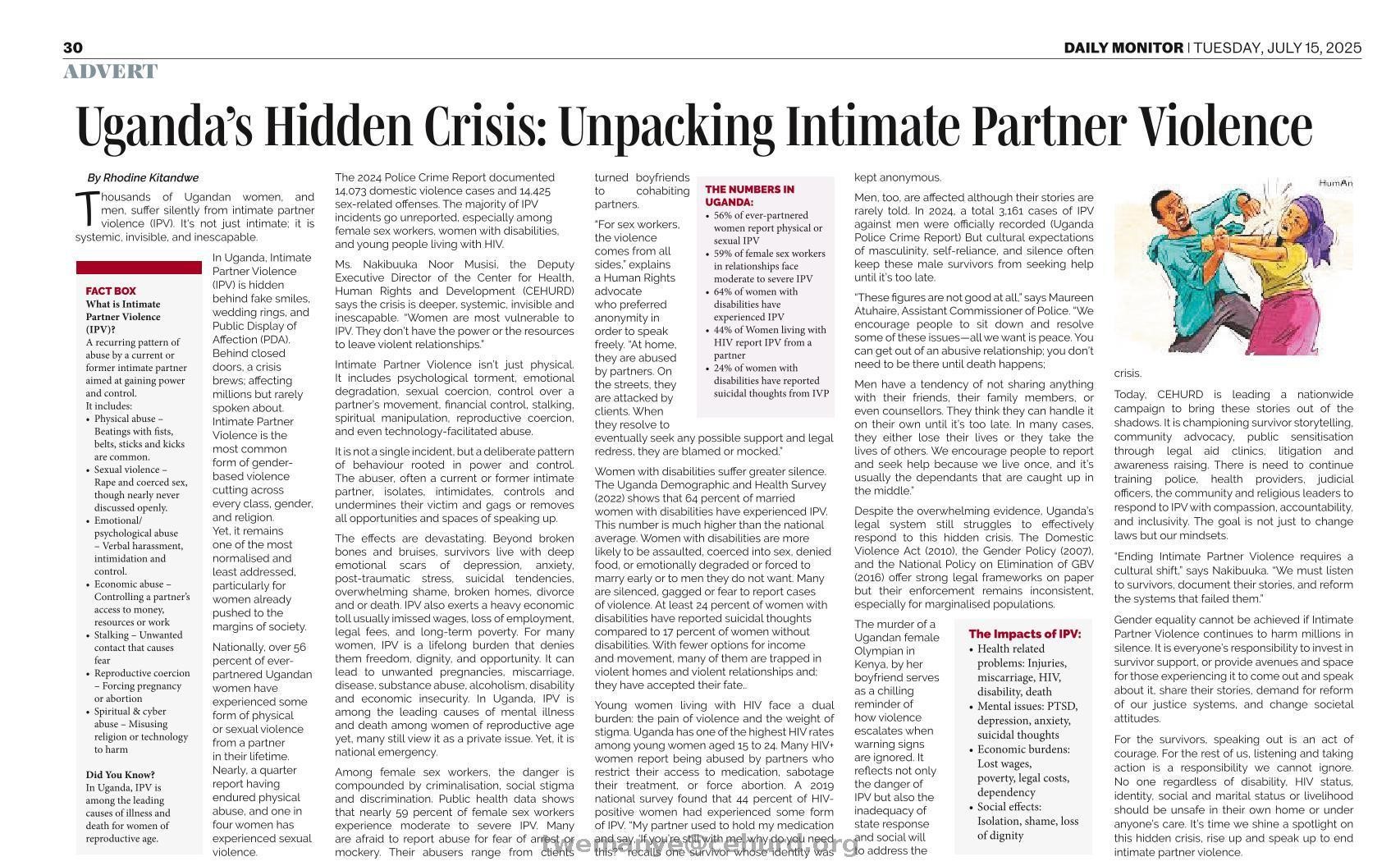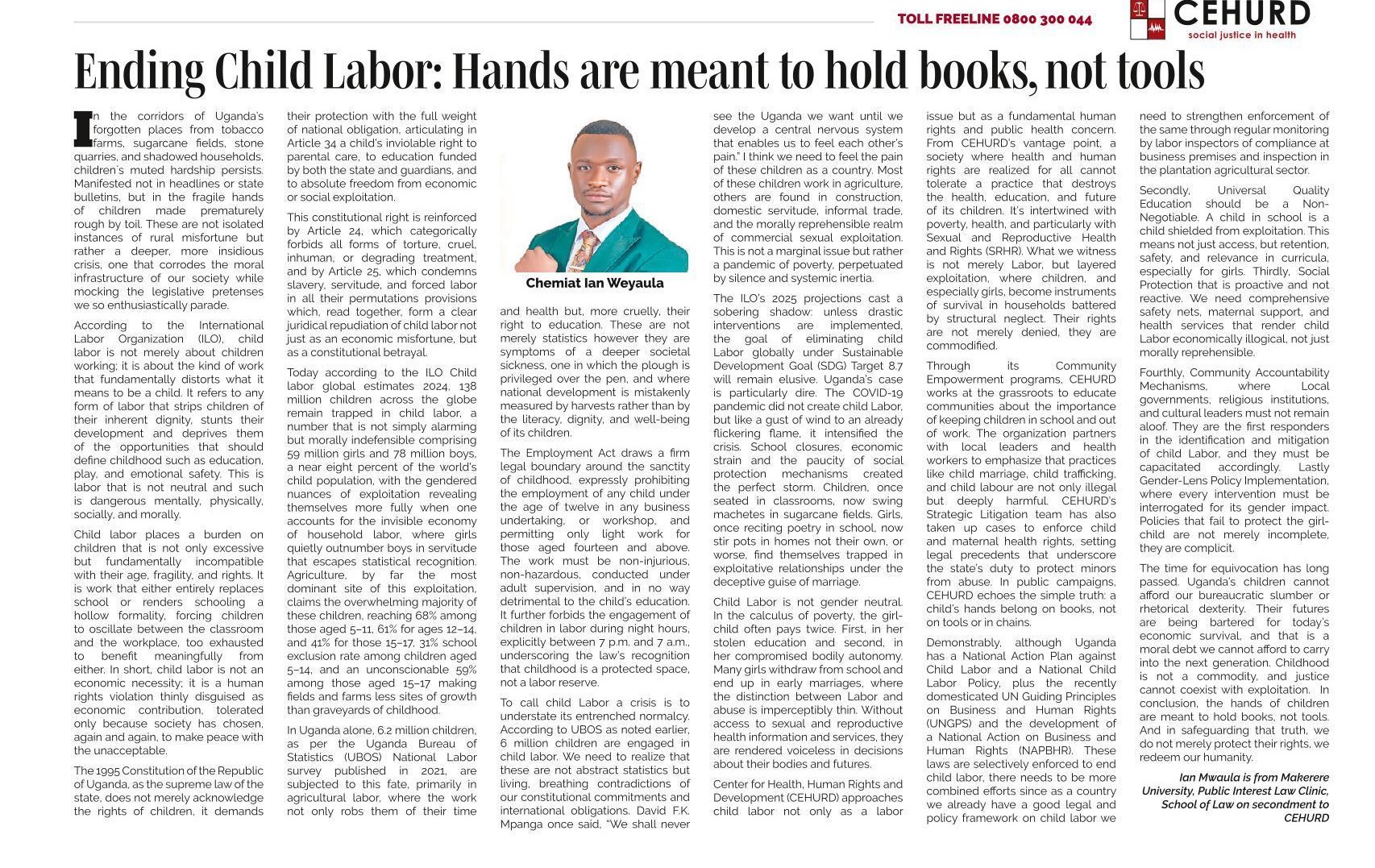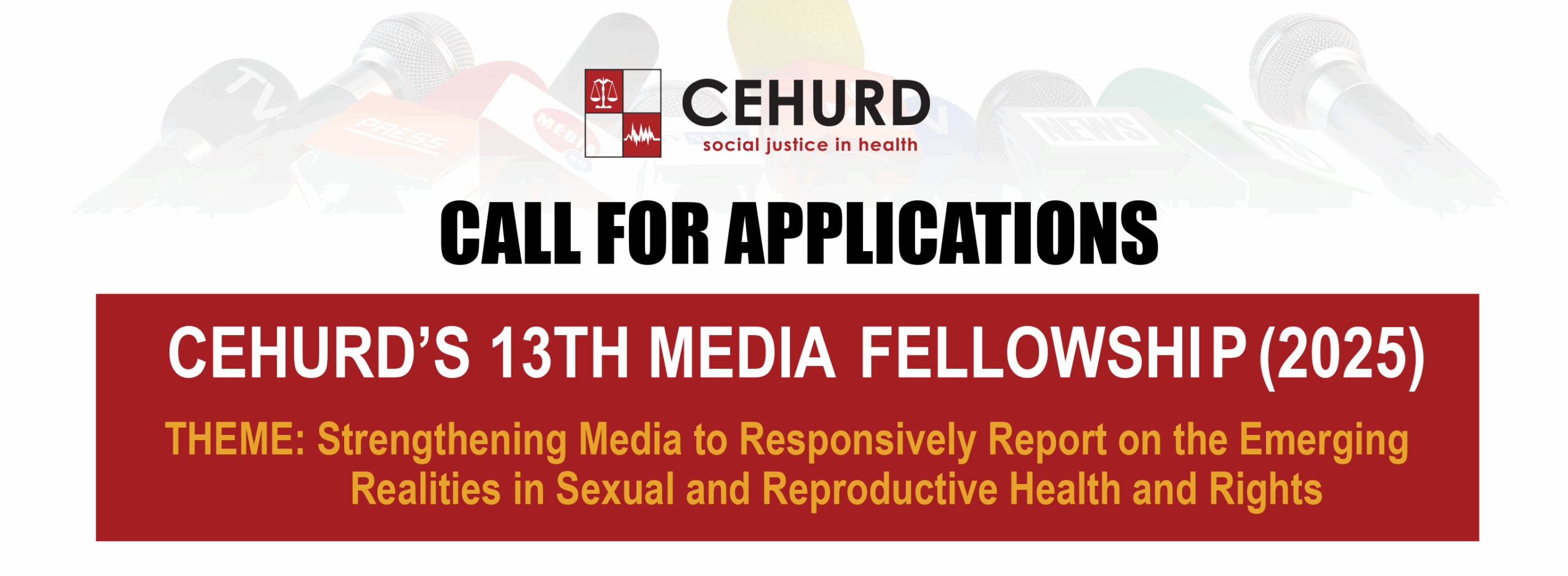~ Compiled by Kitandwe Rhodine | Lawyer | CEHURD
Thousands of Ugandan women, and men, suffer silently from intimate partner violence (IPV). It‘s not just intimate; it is systemic, invisible, and inescapable.
In Uganda, Intimate Partner Violence (IPV) is hidden behind fake smiles, wedding rings, and Public Display of Affection (PDA). Behind closed doors, a crisis brews; affecting millions but rarely spoken about. Intimate Partner Violence is the most common form of gender-based violence cutting across every class, gender, and religion. Yet, it remains one of the most normalised and least addressed, particularly for women already pushed to the margins of society.
FACTS;
What is Intimate Partner Violence (IPV)? A recurring pattern of abuse by a current or former intimate partner aimed at gaining power and control. It includes:
· Physical abuse – Beatings with fists, belts, sticks and kicks are common.
· Sexual violence – Rape and coerced sex, though nearly never discussed openly.
· Emotional/psychological abuse – Verbal harassment, intimidation and control.
· Economic abuse – Controlling a partner’s access to money, resources or work
· Stalking – Unwanted contact that causes fear
· Reproductive coercion – Forcing pregnancy or abortion
· Spiritual & cyber abuse – Misusing religion or technology to harm
Did You Know? In Uganda, IPV is among the leading causes of illness and death for women of reproductive age.
Nationally, over 56 percent of ever-partnered Ugandan women have experienced some form of physical or sexual violence from a partner in their lifetime. Nearly, a quarter report having endured physical abuse, and one in four women has experienced sexual violence.
The 2024 Police Crime Report documented 14,073 domestic violence cases and 14,425 sex-related offenses. The majority of IPV incidents go unreported, especially among female sex workers, women with disabilities, and young people living with HIV.
Ms. Nakibuuka Noor Musisi, the Deputy Executive Director of the Center for Health, Human Rights and Development (CEHURD) says the crisis is deeper, systemic, invisible and inescapable. “Women are most vulnerable to IPV. They don’t have the power or the resources to leave violent relationships.”
Intimate Partner Violence isn’t just physical. It includes psychological torment, emotional degradation, sexual coercion, control over a partner’s movement, financial control, stalking, spiritual manipulation, reproductive coercion, and even technology-facilitated abuse.
It is not a single incident, but a deliberate pattern of behaviour rooted in power and control. The abuser, often a current or former intimate partner, isolates, intimidates, controls and undermines their victim and gags or removes all opportunities and spaces of speaking up.
The effects are devastating. Beyond broken bones and bruises, survivors live with deep emotional scars of depression, anxiety, post-traumatic stress, suicidal tendencies, overwhelming shame, broken homes, divorce and or death. IPV also exerts a heavy economic toll usually imissed wages, loss of employment, legal fees, and long-term poverty. For many women, IPV is a lifelong burden that denies them freedom, dignity, and opportunity. It can lead to unwanted pregnancies, miscarriage, disease, substance abuse, alcoholism, disability and economic insecurity. In Uganda, IPV is among the leading causes of mental illness and death among women of reproductive age yet, many still view it as a private issue. Yet, it is national emergency.
Among female sex workers, the danger is compounded by criminalisation, social stigma and discrimination. Public health data shows that nearly 59 percent of female sex workers experience moderate to severe IPV. Many are afraid to report abuse for fear of arrest or mockery. Their abusers range from clients turned boyfriends to cohabiting partners.
“For sex workers, the violence comes from all sides,” explains a Human Rights advocate who preferred anonymity in order to speak freely. “At home, they are abused by partners. On the streets, they are attacked by clients. When they resolve to eventually seek any possible support and legal redress, they are blamed or mocked.”
Women with disabilities suffer greater silence. The Uganda Demographic and Health Survey (2022) shows that 64 percent of married women with disabilities have experienced IPV. This number is much higher than the national average. Women with disabilities are more likely to be assaulted, coerced into sex, denied food, or emotionally degraded or forced to marry early or to men they do not want. Many are silenced, gagged or fear to report cases of violence. At least 24 percent of women with disabilities have reported suicidal thoughts compared to 17 percent of women without disabilities. With fewer options for income and movement, many of them are trapped in violent homes and violent relationships and; they have accepted their fate..
Young women living with HIV face a dual burden: the pain of violence and the weight of stigma. Uganda has one of the highest HIV rates among young women aged 15 to 24. Many HIV+ women report being abused by partners who restrict their access to medication, sabotage their treatment, or force abortion. A 2019 national survey found that 44 percent of HIV-positive women had experienced some form of IPV. “My partner used to hold my medication and say, ‘If you’re still with me, why do you need this?’” recalls one survivor whose identity was kept anonymous.
Men, too, are affected although their stories are rarely told. In 2024, a total 3,161 cases of IPV against men were officially recorded (Uganda Police Crime Report) But cultural expectations of masculinity, self-reliance, and silence often keep these male survivors from seeking help until it’s too late.
“These figures are not good at all,” says Maureen Atuhaire, Assistant Commissioner of Police. “We encourage people to sit down and resolve some of these issues -all we want is peace. You can get out of an abusive relationship; you don’t need to be there until death happens;
Men have a tendency of not sharing anything with their friends, their family members, or even counsellors. They think they can handle it on their own until it’s too late. In many cases, they either lose their lives or they take the lives of others. We encourage people to report and seek help because we live once, and it’s usually the dependents that are caught up in the middle.”
THE NUMBERS IN UGANDA:
· 56% of ever-partnered women report physical or sexual IPV
· 59% of female sex workers in relationships face moderate to severe IPV
· 64% of women with disabilities have experienced IPV
· 44% of Women living with HIV report IPV from a partner
· 24% of women with disabilities have reported suicidal thoughts from IVP
Despite the overwhelming evidence, Uganda’s legal system still struggles to effectively respond to this hidden crisis. The Domestic Violence Act (2010), the Gender Policy (2007), and the National Policy on Elimination of GBV (2016) offer strong legal frameworks on paper but their enforcement remains inconsistent, especially for marginalised populations.
The murder of a Ugandan female Olympian in Kenya, by her boyfriend serves as a chilling reminder of how violence escalates when warning signs are ignored. It reflects not only the danger of IPV but also the inadequacy of state response and social will to address the crisis.
Today, CEHURD is leading a nationwide campaign to bring these stories out of the shadows. It is championing survivor storytelling, community advocacy, public sensitisation through legal aid clinics, litigation and awareness raising. There is need to continue training police, health providers, judicial officers, the community and religious leaders to respond to IPV with compassion, accountability, and inclusivity. The goal is not just to change laws but our mindsets.
“Ending Intimate Partner Violence requires a cultural shift,” says Nakibuuka. “We must listen to survivors, document their stories, and reform the systems that failed them.”
Gender equality cannot be achieved if Intimate Partner Violence continues to harm millions in silence. It is everyone’s responsibility to invest in survivor support, or provide avenues and space for those experiencing it to come out and speak about it, share their stories, demand for reform of our justice systems, and change societal attitudes.
The Impacts of IPV:
· Health related problems: Injuries, miscarriage, HIV, disability, death
· Mental issues: PTSD, depression, anxiety, suicidal thoughts
· Economic burdens: Lost wages, poverty, legal costs, dependency
· Social effects: Isolation, shame, loss of dignity
For the survivors, speaking out is an act of courage. For the rest of us, listening and taking action is a responsibility we cannot ignore. No one regardless of disability, HIV status, identity, social and marital status or livelihood should be unsafe in their own home or or under anyone’s care. It’s time we shine a spotlight on this hidden crisis, rise up and speak up to end intimate partner violence.
A version of this article was first published in the Daily Monitor on 15th.July.2025



